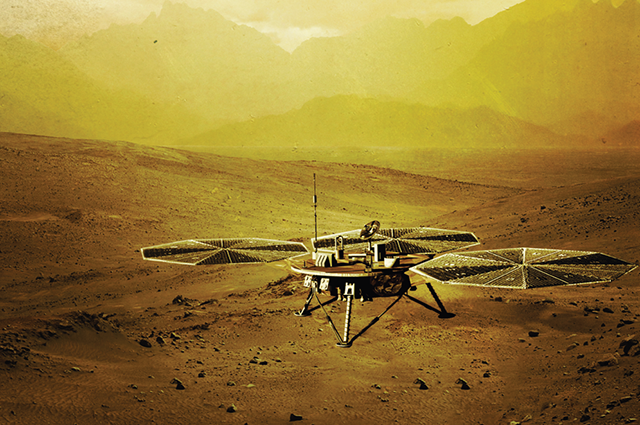Research collaborations

Engineers from California Institute of Technology, MicroLink Devices Inc., and Tufts University have collaborated to develop double-junction GaInP/GaAs solar cells that may be able to operate and survive in the harsh aerial and surface conditions of Venus. As NASA develops the next generation of missions to explore the climate history of Venus, a unique set of spacecraft systems, subsystems, and payload instruments must be created to survive the high temperature, high pressure, and corrosive environmental conditions of the planet. The research team developed three solar cell designs adapted for high, mid, and low altitudes on Venus. The team’s models indicate an optimized solar cell for the Venus surface could generate around four watts per square meter. Tufts Electrical and Computer Engineering researchers involved in the work included Ph.D. candidate Margaret Stevens and Associate Professor Tom Vandervelde.
Read more in Progress in Photovoltaics: Photovoltaic operation in the lower atmosphere and at the surface of Venus.
A team of researchers including faculty from Boise State University, Hebei University, Universidad Autónoma del Estado de Morelos, and Tufts University have applied microscopy, spectroscopy, and computational modeling to demonstrate, using GaAs(111)A quantum dots, the ability to increase wetting layer thickness with increasing GaAs deposition, even after tensile-strained quantum dots have begun to form. This anomalous behavior deviates from the canonical Stranski-Krastanov growth model, which did not allow researchers to fully control quantum dot wetting layer (QD-WL) interactions in hybrid zero- and two-dimensional quantum systems. Researchers are now able to use this anomalous growth mode to modify QD-WL interactions to include more precise control of tensile-strained quantum dot band structure for infrared optoelectronics and quantum optics applications. The researchers from REAP Labs at Tufts (part of the Department of Electrical and Computer Engineering) were Research Assistant Professor Kevin Grossklaus and Associate Professor Tom Vandervelde.
Read more in Scientific Reports: Anomalous Stranski-Krastanov growth of (111)-oriented quantum dots with tunable wetting layer thickness.
Department:
Electrical and Computer Engineering